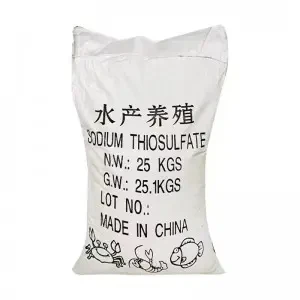



Innovative Applications of PAM Flocculant in Water Treatment Solutions
The Role of PAM Flocculant in Water Treatment
Polyacrylamide (PAM) flocculant is a widely used chemical agent in various industries, especially in water treatment processes. This polymer compound plays a crucial role in enhancing the efficiency and effectiveness of the treatment of wastewater, sludge, and other pollutants, making it an essential contributor to environmental protection and resource management.
Understanding PAM Flocculant
PAM is a water-soluble synthetic polymer that is primarily composed of acrylamide monomers. It can be classified into anionic, cationic, and non-ionic types, each exhibiting different properties and behaviors depending on the presence of charged groups. The choice of PAM type is critical because it affects the flocculation process, determining the degree of efficiency in removing suspended solids and impurities from water.
When PAM flocculant is added to water, it interacts with suspended particles, promoting aggregation and the formation of larger flocs. These larger particles are easier to separate from water, thus facilitating the clarification process. PAM’s unique structure enhances its ability to bridge between particles, leading to improved sedimentation or flotation in various treatment systems.
Applications in Water Treatment
PAM flocculants are employed in many applications across different sectors. In municipal wastewater treatment, they help in clarifying effluent before it is discharged into the environment. By improving the settling properties of solids, PAM minimizes the volume of sludge generated and ensures compliance with environmental regulations.
In industrial scenarios, PAM is used for treating process water, particularly in sectors such as mining, oil recovery, and paper manufacturing. These industries often produce large volumes of wastewater containing high concentrations of suspended solids and organic materials. The implementation of PAM flocculants significantly enhances the efficiency of these treatment processes, reducing overall costs and improving water reuse prospects.
Advantages of Using PAM Flocculant
The use of PAM flocculants in water treatment processes offers several advantages
pam flocculant

1. Increased Efficiency PAM significantly enhances the settling rate of suspended solids, leading to clearer effluent and better water quality. This is particularly beneficial in meeting stringent regulatory standards.
2. Versatility PAM can be tailored to fit specific applications. The ability to adjust its molecular weight and charge density allows for customized solutions that meet the unique needs of different industries.
3. Cost-Effectiveness By improving the efficiency of flocculation and sedimentation, PAM reduces the volume of chemicals needed in treatment processes. This leads to lower operating costs and minimizes chemical usage, promoting a more sustainable approach to water treatment.
4. Environmental Benefits The use of PAM flocculants aids in the reduction of pollutants in water bodies, thereby protecting aquatic ecosystems and enhancing the quality of freshwater resources.
Considerations and Best Practices
Despite the numerous benefits, the application of PAM flocculants should be approached with caution. The handling and disposal of PAM-products must comply with safety regulations to mitigate environmental and health risks. Careful attention must also be paid to the selection of the appropriate type of PAM, as improper use can lead to adverse effects, such as interference with aquatic life or issues with bioavailability in treated effluent.
Furthermore, the effectiveness of PAM flocculants can be influenced by factors such as pH, temperature, and the nature of the particles being treated. Therefore, conducting thorough chemical analysis and engineering assessments is essential to maximize efficiency and ensure optimal results.
Conclusion
In conclusion, PAM flocculants play a vital role in modern water treatment practices, providing an effective means to enhance the removal of suspended solids and improve water clarity. With their versatility and effectiveness, PAM products remain a staple in both municipal and industrial applications. By continuing to optimize their use, we can contribute to more sustainable water management practices, ensuring that clean water is available for future generations while protecting our precious aquatic ecosystems.
-
Why Sodium Persulfate Is Everywhere NowNewsJul.07,2025
-
Why Polyacrylamide Is in High DemandNewsJul.07,2025
-
Understanding Paint Chemicals and Their ApplicationsNewsJul.07,2025
-
Smart Use Of Mining ChemicalsNewsJul.07,2025
-
Practical Uses of Potassium MonopersulfateNewsJul.07,2025
-
Agrochemicals In Real FarmingNewsJul.07,2025
-
Sodium Chlorite Hot UsesNewsJul.01,2025










